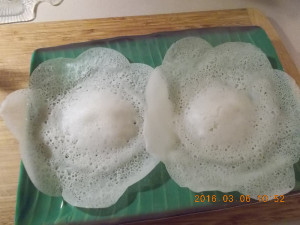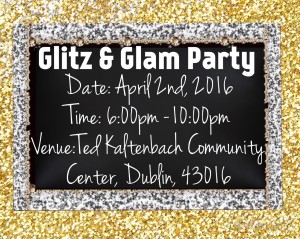Editor’s letter
Hello Friends,
 It’s officially Spring! The clocks have turned. Buds have already started appearing on trees. My daffodils look ready to sprout. I’m excited!
It’s officially Spring! The clocks have turned. Buds have already started appearing on trees. My daffodils look ready to sprout. I’m excited!
It is very fitting that Holi, the festival of colors, will also be celebrated this month. Holi heralds the coming of spring as well as the triumph of good over evil. Growing up in Mumbai, Holi brings back nostalgic memories of being smothered in bright colors and sprayed with pichkaari’s (water pistols). Nerf super soakers don’t really match up!
March also heralds the Tax season and I’m sure you are busy getting paperwork in order before the April 18th deadline.
Earlier this month, we lost one of finest actors of Malayalam cinema, Kalabhavan Mani. Mani started as a mimicry artist in the Kalabhavan troupe and starred in over 200 films in Malayalam, Tamil and Telugu. He won a National Film Award and the Kerala State Film Award in 1999 for his outstanding performance in Vaasanthiyum, Lakshmiyum, pinne Njaanum. His legacy will live through his cinema.
Easter is also just around the corner. I sincerely wish you all a very Blessed Easter! Many of you will be breaking your Lenten fast with a sumptuous spread at your Easter meal with friends and family, while the kids enjoy loading up their baskets with Easter eggs and chocolate bunnies.
The EC 2016 team is excited to present their first event, Glitz & Glam Family night on Saturday, April 2nd, 2016. We hope to see you all there with your families ready to shake a leg and have a good time!
And finally, I wish those of you with school going children a fantastic Spring Break, whether that be spending quality time with family at home or going some place nice. We wish you safe travels!
I leave you with a quote:
“Optimism is a courageous choice you can make every day, especially in the face of adversity. Life is not Perfect, Life is not Easy, Life is Good.”
– By brothers Bert and John Jacobs
Until next issue….
Warm regards,
Anu Kurian
SPOTLIGHT
My fathers’s paintings- By Maya Achen
My father, P.K. Achen who currently lives in Cochin, Kerala is a graduate of the famed J.J. School of Arts, Bombay. He graduated in 1960 and went on to work as
‘Art Director’ in multiple Advertising agencies both in India as well as in East Africa, Ogilvy and Mather being the most notable amongst them. He was also one of the co-founders of Chaayya Advertising agency, Chennai back in the 1980’s and retired in 1994. During his working years, I had never seen my dad pick up a painting brush except when he “had” to help me with my drawing class homework in elementary school.
Fast forward to the year 2000 when my parents were visiting us in Pickerington, OH. He was bored, as many fathers visiting the U.S.A will attest to. My husband Pradip, had a wonderful idea and requested him to recreate a mural that adorned his ancestral home in Trivandrum. There, that day, my father took up a paint brush after nearly 40 years. The mural sting rekindled the passion for drawing and since then he has created numerous pieces of art. Here are some of them.
 Painting #1: This is a recreation of an original mural that displays a typical Kerala Hindu temple procession. A photograph of the original mural (by renowned painter Mr. A Ramachandran) was projected on to a 8×4 piece of plywood and then painstakingly filled in by hand and painted using acrylic paint. This Temple procession depicts the priest (in orange colored clothing) carrying the deity of the temple, protected from the weather elements by an umbrella. The procession includes a percussionist, multiple devotees and children clad in “mundu” and “randamundu” traditionally worn by men and women in Kerala in the olden days. You can also see the traditional stone lamp lit in front of the temple entrance.
Painting #1: This is a recreation of an original mural that displays a typical Kerala Hindu temple procession. A photograph of the original mural (by renowned painter Mr. A Ramachandran) was projected on to a 8×4 piece of plywood and then painstakingly filled in by hand and painted using acrylic paint. This Temple procession depicts the priest (in orange colored clothing) carrying the deity of the temple, protected from the weather elements by an umbrella. The procession includes a percussionist, multiple devotees and children clad in “mundu” and “randamundu” traditionally worn by men and women in Kerala in the olden days. You can also see the traditional stone lamp lit in front of the temple entrance.
 Painting #2 is that of a Kathakali Dancer, painstakingly drawn using a No. 1 black sharpie (fine tip). The background in black was filled in using the sharpie pen.
Painting #2 is that of a Kathakali Dancer, painstakingly drawn using a No. 1 black sharpie (fine tip). The background in black was filled in using the sharpie pen.
 Painting #3: is a copy of a Hindu Goddess in acrylic paint.
Painting #3: is a copy of a Hindu Goddess in acrylic paint.
Painting #4: is an abstract flower in black and white using No.1 black sharpie (fine tip).
Thanks to my father, I have never had to purchase any art work to adorn the walls of my house. My father’s paintings are there to remind me of him every day. What a fine, invaluable, lasting legacy for me and my family.
Maya Achen has been a resident of Columbus, OH since 1995 and a COMA member since its inception. She and her husband Pradip have been active community members and enjoy promoting , celebrating Indian and Kerala cuisine, arts, music and culture.
MALAYALAM VARTHAKKAL
Ottaplakkal Neelakandan Velu Kurup, popularly known as ONV Kurup or simply and endearingly O. N. V., was a renowned Malayalam poet and lyricist from Kerala, who won the Jnanpath Award, the highest literary award in India for the year 2007. He received the awards Padma Shri in 1998 and Padma Vibhushan in 2011, the fourth and second highest civilian honours from the Government of India. He died on 13th February 2016.
ONV Oru Orma Kurippu- By Manjula Nair
Manjula is the niece of the late Sri ONV Kurup. In her writings, Manjula reminisces nostalgic memories of her late uncle; the great man, the poet ONV Kurup. We are fortunate enough to have these thoughts shared with us. To see these beautiful handwritten letters, please click on the link below.
Manjula Nair has been a dynamic and long standing member of the COMA community.
Oru Charamageetham- By Beena Kumar
ഒരു വട്ടം കൂടിയെൻ ഓർമകൾ മേയുന്ന
ഗാനത്തിൻ ശില്പീ പ്രണാമം
മധുരിക്കും ഓർമകളെ മലയാളിക്കേകിയ
കവിയേ നിൻ മുന്നിൽ പ്രണാമം
ശരദിന്ദു മലർ ദീപ നാളം നീട്ടി
യാമങ്ങൾ നഷ്ടത്തിൻ പാട്ടു പാടി
നഷ്ട വസന്തത്തിൻ തപ്ത നിശ്വാസങ്ങൾ
ഭൂമി തൻ നെഞ്ചിൽ വിതുമ്പി
തൊഴുതു മടങ്ങും സന്ധ്യയും ഏതോ
ഓർമകൾ മൂളി കരഞ്ഞു
മഞ്ഞൾ പ്രസാദവും നെറ്റിയിൽ ചാർത്തി
മലയാളി മങ്ക വിതുമ്പി
മാണിക്ക വീണ തൻ കംബികളേതോ
മൃത ശാന്തി ഗീതങ്ങൾ പാടി
ഭൂമിക്ക് ചരമ ഗീതം പാടി പോയൊരു, കവിയേ
നേരുന്നു നിനക്കാത്മ ശാന്തി
നേരുന്നു നിനക്കാത്മ ശാന്തി
Here’s a link to the audio:
http://www.comaohio.org/index.php/2016/02/28/onv/
Written and sung by Beena Kumar, dedicated COMA member and wife of Ajoy Kumar President, EC 2016.
FASHION
 Smitha Pradeep is a fashion designer & celebrity stylist for the Malayalam film industry living in Kochi. Here she is pictured wearing a rather striking designer saree. This is what she has to say about her design sensibility.
Smitha Pradeep is a fashion designer & celebrity stylist for the Malayalam film industry living in Kochi. Here she is pictured wearing a rather striking designer saree. This is what she has to say about her design sensibility.
“Most of my designs are an amalgamation of my thoughts at that moment in time. While designing this outfit my inspiration was definitely younger age group audiences like teens, young adults and young wives who put off wearing a saree due to the hassles of wearing one. So this one is an easy-to-wear 2-piece saree! It definitely strays away from conventional styles with the usage of digital prints for the pleat portion, and vibrant & unconventional colors for the upper portion. Moreover, this design was also inspired by a common complaint among most of my customers of not being able to wear it more than 2 or 3 times as a saree. This saree therefore has a wear-it-2-ways style. The top half can be worn either in saree style OR as a shawl with any single colored salwar, say a black or blue or white. The blouse is also trendy and modern and can be used as a crop top with a pair of high waisted jeans!”
Supplied by Rekha Nair, Joint Secretary EC 2016
PACHAKAM
Poovappam- By Preetha Varughese
 The name sounds interesting doesn’t it? It’s Paalappam in the shape of a flower. Make it real special this Easter for your loved ones.
The name sounds interesting doesn’t it? It’s Paalappam in the shape of a flower. Make it real special this Easter for your loved ones.
Ingredients
- 2 cups Basmati Rice
- 2 cups or 1 tin of Coconut milk
- 1/4th teaspoon Yeast
- 5 to 6 tablespoon Sugar
- 2 to 3 tablespoon Cooked rice
- 1/4th teaspoon cumin powder
- 1 teaspoon crushed shallots juice
- Pinch of salt
- Water as needed
Method
Wash and soak rice for 5 to 6 hours. Activate yeast in lukewarm water with a teaspoon of sugar and let sit for few minutes. Drain water from soaked rice and grind with coconut milk to a smooth consistency. Add activated yeast, sugar, cooked rice and lukewarm water if needed and grind to a pourable consistency.
Let the batter sit for about 6 to 8 hours in a warm place. Place in the oven with lights on. Once it ferments and rises , add cumin powder,shallot juice,pinch of salt, sugar if needed and stir gently and let sit again for 10 minutes.
Use Paalappam chatti and heat it up medium to less than medium heat. Pour about a deep ladle ful batter gently into the middle of paalappam chatti. Swing it front and back, left and right, then diagonally. Close with lid and cook for about a minute or two until the insides are cooked well and rises up. Use flat ladle to gently remove from chatti and serve warm. Best served with vegetable or meat stew.
Happy Poovappam making and Happy Easter!
Preetha Varughese is a Pharmacist by profession and lives with her family in Hilliard. In her spare time she likes to put her passion for traditional Kerala cooking to work.
YOUTH ZONE
Race shouldn’t define people- By Neil Joseph
Over the past few months, we’ve seen race relations in our country come under heavy scrutiny. From the violence in Ferguson, Missouri, to Baltimore, Maryland, our country has been plagued by conflict caused by racial discord. Because of this, many commentators, columnists and activists have commented on the deeper problems that seem to have caused our nationwide racial tension. Out of this, ideas such as “white privilege” and movements such as “Black Lives Matter” have divided our country. Some believe that movements and ideas such as these are irrelevant, wrong and unnecessary. Others think that these people are blind, ignorant and unwilling to listen.
Many people may think that as a brown kid from Columbus, Ohio, I have no place in talking about Black Lives Matter or the concept of white privilege. And that may be true. My experiences, however, have given me a unique perspective on the race debate that permeates throughout our country. I’m not black, so I don’t entirely feel the same feelings that many black people around our country have felt this past year. At the same time, I’m not white, so I don’t personally understand what emotions are elicited for a majority of our country when talking about race relations. But I’ve had my own experiences, seen what people think and learned about what others feel about an issue that challenges their identity.
For me, the use of the words “white privilege” puts the wrong name on a concept that I’ve seen and experienced to be true. The words “white privilege” connote a tangible and real advantage that a person gets from the color of their skin. In today’s day and age, I don’t find this to be true. Today, being white is no longer a direct advantage for getting a job, getting into a school or many other things (aside from a few ignorant examples that will always persist). This, however, does not mean that our nation is totally colorblind or perfect when it comes to race relations.
For me, the concept of “white privilege” is better described in a different way. There isn’t a perfect phrase or word to describe it, but there is an inherent benefit for someone to be white: they do not have classifications, definitions and stereotypes placed upon them. In my experiences, my skin color and my background has put preconceived notions into people’s heads. Most people assume that because I’m Indian, I’m defined by brains, a desire to be a doctor and my ability to spell words. Although this may not seem to be a horrible stereotype (people probably overestimate my brains and ability to spell), it reveals part of the reason why race relations in our country seem to be so bad. There is more to me than what many people assume because of the color of my skin, and I want people to learn these things without expecting me to act in a certain way.
These assumptions that I’ve experienced are what the heart of racial dialogue todays aims to get to. I honestly believe that most people who talk about the concept of white privilege aren’t blaming anyone, because no one’s status at birth is their own fault. People who comment on race should be largely seeking to eliminate the widely held assumptions about different groups based on their classifications. Again, this doesn’t imply that merely white people hold these assumptions (I find myself doing it) or that they are some way at fault. Rather, dialogue about race should be about acknowledging the fact that some people benefit or are hurt because of the classifications that are placed upon them, and that we need to change this.
At their core, movements such as Black Lives Matter seek to eliminate the largely unconscious assumptions that society and people as a whole place upon certain groups. People don’t think about the way that stereotypes and classifications impact their worldview, out of no fault of their own. A person’s upbringing, experiences and interactions have the greatest impact on the way they look at others. The only way to counter this is to approach each new person with an open mind and a rejection of preconceived notions. This isn’t color blind, but stereotype blind. It extends to race, but also to many other things. People are defined by their race, gender, part of the country, income status and so much more. Once we stop letting all of these things (especially race) inform our feelings about a person before we get to know them, then we will begin to make progress in improving race relations in our country. People can’t control their status at birth — so we must classify them by what they can control.
Neil Joseph is a Junior at The University of Notre Dame, majoring in Economics and Political Science. Currently studying in London, England for a semester. Parents are Lata and Abraham Joseph. Neil wrote this article for his college newspaper ‘Observer’ in March 2015.
GLITZ & GLAM FAMILY NIGHT
Are you as excited as we are for the Glitz & Glam Family Night? 
Your EC 2016 team, along with the Youth Wing, has lined up an array of fun games & activities, great food, popular music and dance. There is something for everyone. It’s going to be an all round family spectacular so don’t wait and book your tickets early.
Here’s a teaser DubSmash entry to give you a preview of the fun in store!
To register for the event please visit www.comaohio.org and click on the Events page and follow the prompt. Renew your membership and avail the discount.
TRADITIONAL? OR ROTH? OR BOTH?
Individual retirement accounts (IRAs) allow income earners—and in certain cases, their unemployed spouses—to save for retirement on a tax-deferred basis with special tax privileges. Each type of IRA comes with its own rules and benefits. The first step in choosing what’s right for you is knowing which one(s) you’re eligible to contribute to.
Anyone who earns income through employment and is under age 70½ can contribute to a traditional IRA. However, your ability to deduct contributions to a traditional IRA will depend on whether you participate in a retirement plan at work, together with your tax filing status and your MAGI. You may qualify for a tax deduction on your contributions if your household income doesn’t exceed certain limits.
Your ability to contribute to a Roth IRA depends on your income level. Also, contributions to a Roth IRA aren’t tax-deductible, but no federal income tax is due when distributions are made, provided certain requirements are met.
Maximum contributions for persons age 49 and under are $5,500 in 2016. For persons age 50 and older, the maximum is $6,500 in 2016. Contributions can be made until mid April that count for the 2015 tax year.
The Bottom Line… IRAs offer effective, tax-advantaged ways to save for retirement. Choosing between a traditional IRA and a Roth IRA in specific situations involves such considerations as the individual’s age, income and participation in other qualified arrangements.
Contact us to discuss your own unique situation.
Jason Sowards
LET’S CONNECT
Special thanks to all the contributors to this issue. Especially inviting more contributions from kids. The COMA newsletter is an excellent opportunity for your child’s work to get published.
COMA Official Email: coma.officials@gmail.com
Ajoy: 614 556 6588
Simple: 614 743 7888
Newsletter contributions: coma_ohio@yahoo.com


